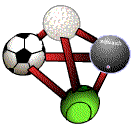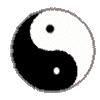




My unique combination of physical postures, enable any athlete to integrate for themselves, the following performance related effects:Cardiovascular System
Tai Chi increases the circulation of blood and oxygen to all parts of the body. The slow rhythmic movements allow people of all ages to improve physical conditioning, decrease fatigue and develop endurance. Learning Tai Chi does not require over exertion, but as one progresses the heart rate increases to aerobic exercise levels. The movements promote relaxed deep breathing. Tai Chi has been found to reduce high blood pressure.The Skeletal System
One main goal of Tai Chi practice is to achieve proper alignment of the spine with the shoulder and pelvic girdles. Posture is naturally corrected. The slow sustained stretching improves flexibility in all joints. Both of these effects can reduce the natural degeneration of the spine and/or joints which occurs with greater age.
The Muscular System
All the major skeletal muscle groups are used in Tai Chi. Slow stretching alternating with full contraction of the muscles relieves unnecessary muscle tension and improves muscle tone. Strengthening the muscles of both the lower back and the abdomen is especially good for people with lower back pain. Tai Chi also has beneficial effects on the involuntary muscles of the digestive tract.
The Nervous System
Tai Chi develops balance, coordination, and fine motor control. The reflex wiring in the spinal cord is used in the movement patterns and the reflexes are therefore improved. Practising Tai chi initially requires focused attention and therefore improved concentration. When the set has been learned well, it is done with relaxed awareness and can have the same effect on the mind as meditation.
Please e-mail us.
Mainpage Squash Tai-Chi Michael Hall
MaLiang Webpage Designer